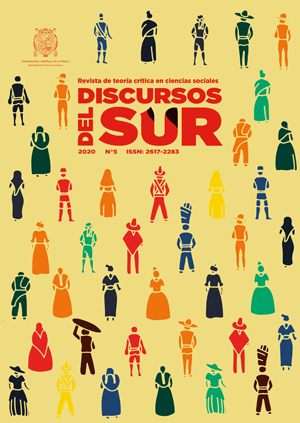The uses of defeat
From territorial mutilation to the rescue of the glorious past in central Andean countries
DOI:
https://doi.org/10.15381/dds.v0i5.18325Keywords:
Andes, amputation, cartography, nation-state, legitimacy, territoryAbstract
Andean historiographies are impregnated with an extended idea of territorial mutilation, which tends to affect the nation’s image. As well as evoking a social imagery of real and symbolic loss of its original greatness. This kind of “myth of origin” hides the absence of inclusive national projects in Ecuador, Peru and Bolivia. The notion of loss seems to constitute an attribute, since far from debilitating the imaginary of the nation, tends to reinforce it and to lend it legitimacy. In pre-Hispanic times, the societies of these three countries were historically articulated. Their logics differed from that of the colonial cartography, of the nineteenth-century States affairs, and of the Creole elites. At present, the territorial factor does not play a pivotal role in the representations of legitimacy of the countries of the central Andean region. However, the stamp of the territorial mutilation has significantly marked the identities of their social actors.
Downloads
Published
Issue
Section
License
Copyright (c) 2020 Mirko Solari Pita

This work is licensed under a Creative Commons Attribution-NonCommercial-ShareAlike 4.0 International License.
THE AUTHORS RETAIN THEIR RIGHTS:
(a) The authors retain their trademark and patent rights, and also on any process or procedure described in the article.
(b) The authors retain the right to share, copy, distribute, execute and publicly communicate the article published in Discursos Del Sur (in example, depositing the article in an institutional repository or publish it in a book), with recognition of its initial publication in the Discursos Del Sur.
(c) The authors retain the right to make a later publication of their work, to use the article or any part of it (for example: a compilation of their works, notes for conferences, thesis, or for a book), provided that they indicate the source of publication (authors of the work, magazine, volume, number and date).






